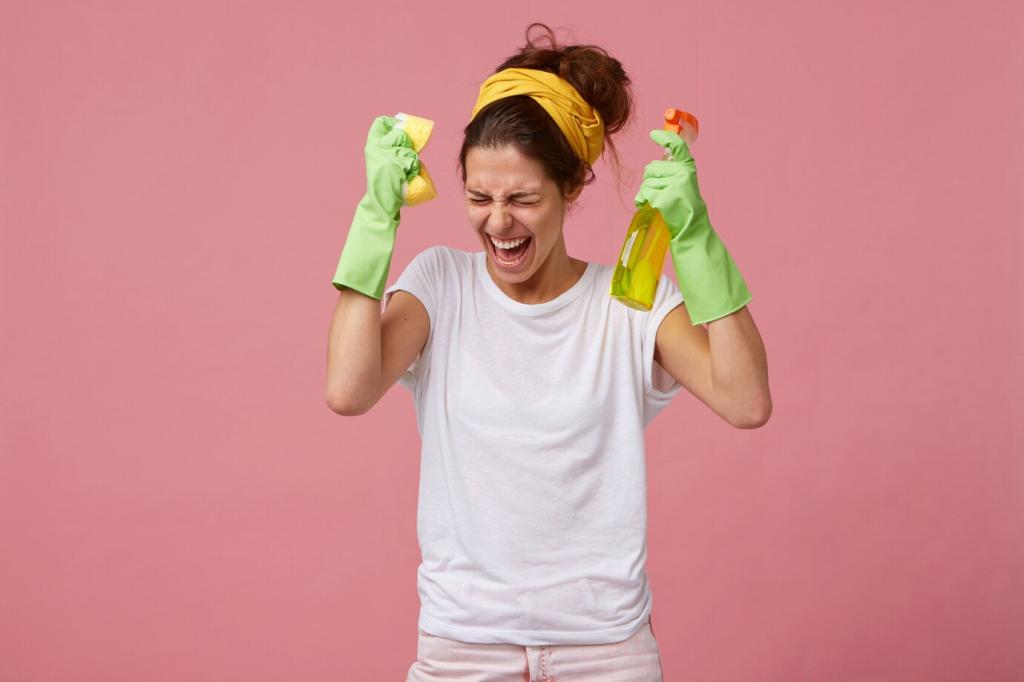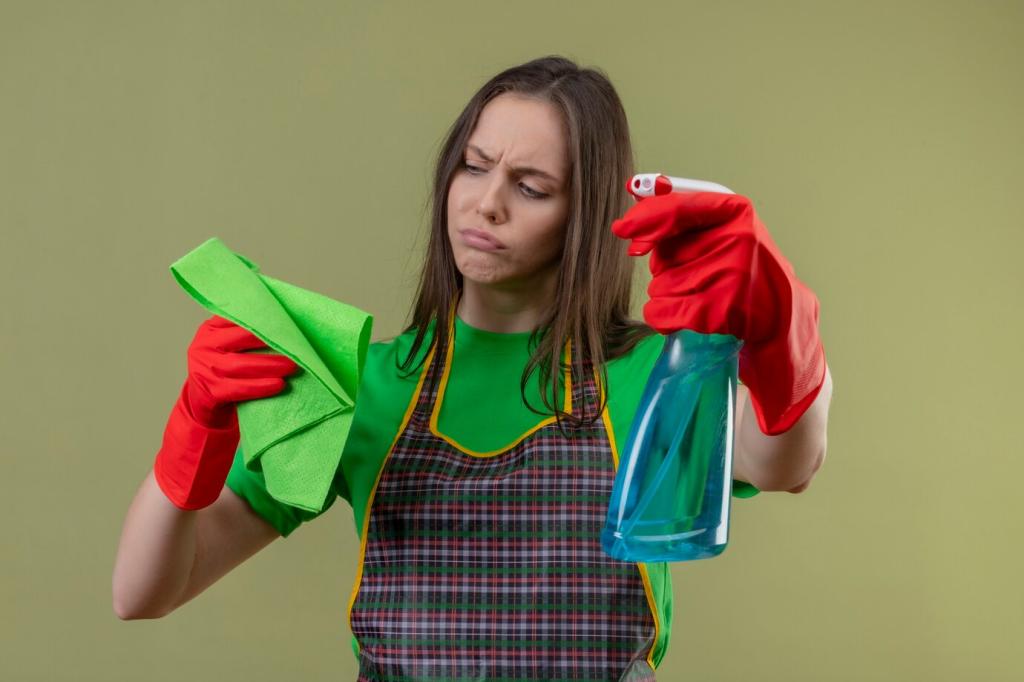Wood Care with Vinegar, Olive Oil, and Black Tea
Blend one part white vinegar with one part olive oil in a small bottle, shake well, and apply sparingly with a soft cloth. The vinegar lifts haze while the oil conditions dry grain. Always buff thoroughly, working with the wood’s direction, and test on an inconspicuous spot first.
Wood Care with Vinegar, Olive Oil, and Black Tea
Brew strong black tea, let it cool, and lightly wipe wooden surfaces to enhance depth and reduce dullness. Tannins in tea subtly enrich color, especially on warm-toned woods. Avoid soaking; use a wrung-out cloth, then follow with a dry buff for a calm, satiny glow.


